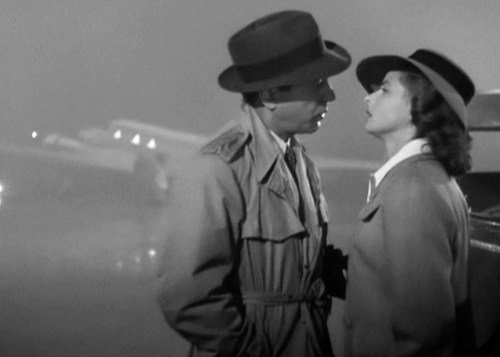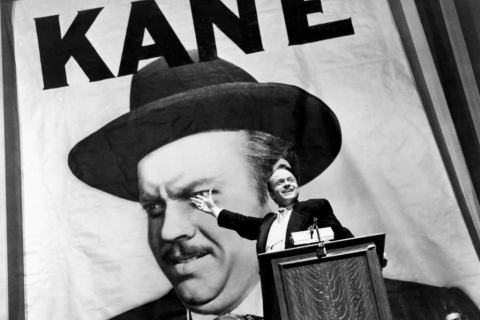The Golden Age of Hollywood
The sound era brought on many changes that helped films develop into another era, The Golden Age of Hollywood. As we mentioned in our last post The Jazz Singer in considered the first film to incorporate sound and the rest is history. By 1929 the silent film era had completely ended and “talkies” became the norm. So much, that we don’t even refer to movies as “talkies” anymore.
Beginning in the 1920’s many filmmakers began to see what types of films were successful, starting the trend of genre films. Westerns, musicals, biopics, and slapstick comedies were there most popular genre films to come out during this time period. Of course this trend continued with the development of sound and by the late 1930’s the quality of these genre films had improved dramatically.

Photo: New Republic
The Aftermath of the War
With the U.S. involvement in World War 2 the film industry began to turn their narratives to include patriotism and propaganda. Some of these films include Watch on the Rhine(1943), Shadow of a Doubt(1943), and of course Casablanca (1942). Many films embraced this trend and created realistic war dramas such as In Which We Serve(1942). Of course this trend brought on a new and interesting narrative, successful films no longer had to fit into a specific genre. That doesn’t mean that genre films went away, today we still see new genre films released on a monthly basis.

Photo: Open Culture
In 1941 Orson Welles released his famous film Citizen Kane, which took the world by storm. Citizen Kane is considered one of the most influential films to date and still manages to make “Best of” lists. The film was nominated for nine separate Academy Awards and won for “Best Writing.” Every aspect of the movie has been praised, the film revolutionized cinematography, narrative, and music. This film was directed, produced, and starred in by Welles, which was also very uncharacteristic for the time.
Film During the 1950’s
After the war film started to suffer because of various factors, including the rise of television. With it’s increasing popularity, television began to become standard in many American homes. Theater owners had to worry about the possibility of going out of business because more and more Americans were choosing to stay home and watch television. To combat this issue the theaters that could afford to started to change their screen formats. Many theaters advertised bigger and better screens to enjoy the newest movies, but many theaters couldn’t afford to keep up.

Photo: Screen Rant
Another tactic that was used to gain more audience attendance was the introduction of 3-D film. Yes, 3-D film has been around for a very long time. This gimmick was used to attempt to sell films like House of Wax(1953) and The Creature from the Black Lagoon(1954). This gimmick unfortunately wasn’t enticing enough because 3-D filming only lasted a few years.
Unfortunately, many theaters closed during this time period. It became very difficult to lure families out of their homes when many were upgrading to television sets. Of course, as we know this era was not the demise of film. Films have continued to shock and awe audiences and have only continued to develop for the better. The Golden Age of Hollywood may be over, but films continued to live on.
In many recent years we’ve developed films to the point that 3-D has made a huge comeback along with the introduction to IMAX. With movies like Harry Potter, The Dark Knight, and Lord of the Rings we’ve seen a huge surge in trilogies and series films. It’s clear that film has continued to maintain its popularity over time and is only going to continue to gain more popularity.

